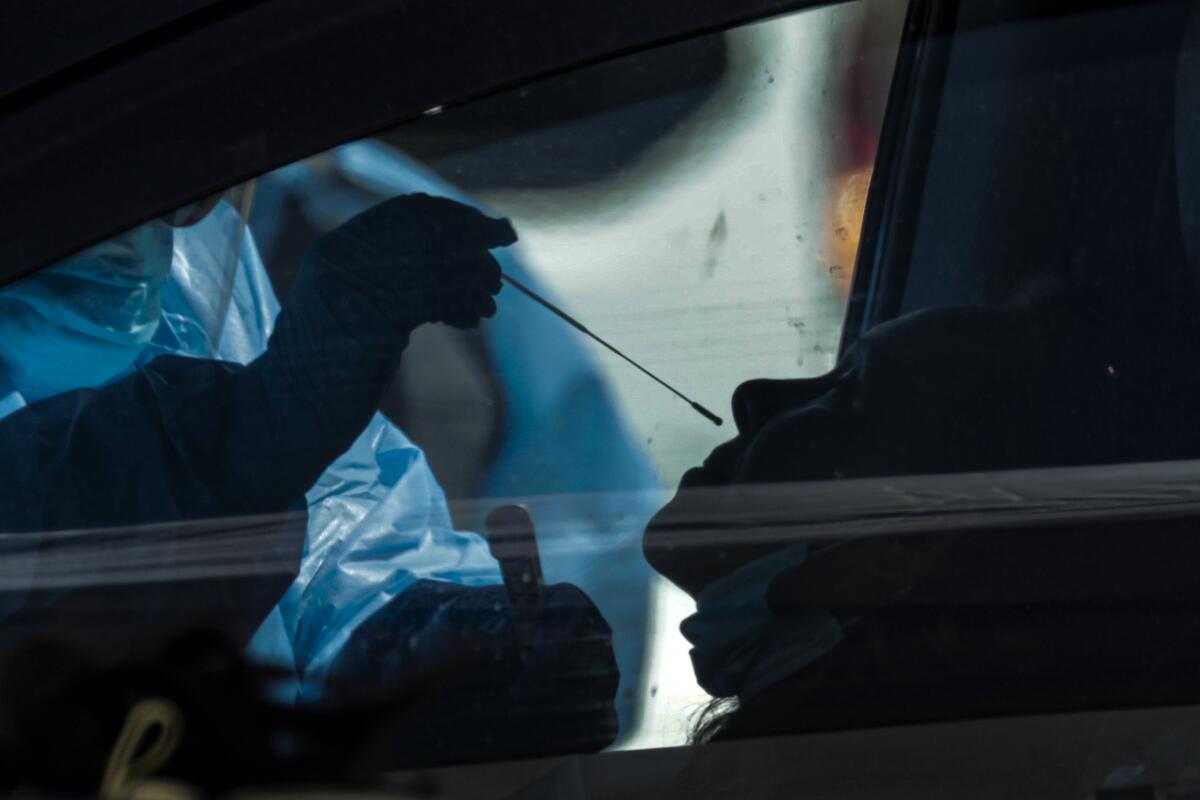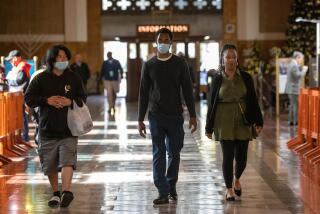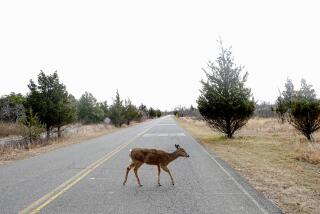Everyone infected with the coronavirus is a silent spreader for at least a while

If the new coronavirus has ever made you its host, you are almost certainly guilty of some silent spreading.
Scientists in China have shed new light on how readily the SARS-CoV-2 virus spreads unseen from person to person — a form of “cryptic” transmission that can transform a manageable outbreak into an out-of-control epidemic.
People infected with the new coronavirus are almost certainly emitting it for close to 2 ½ days before their first signs of illness appear, the scientists found. In fact, the contagion of an infected person reaches its peak roughly 18 hours before she feels the first blush of fever, notices the first twinge of body ache, or experiences her first bout of coughing.
In short, an infected person can walk around feeling fine for more than two full days while spewing virus into the air, depositing it onto door knobs and handrails, and sowing the seeds for future infections.
Here’s an inside look with doctors and nurses on the frontlines of the COVID-19 battle.
This is not the dreaded phenomenon of “asymptomatic spread” — the hidden infectiousness of people who have no idea they’re spreading the coronavirus because their symptoms are mild or absent.
This, it turns out, is the far-more-common case of “presymptomatic spread.” Within a few days, the spreader’s misery will telegraph to all around her that they have been exposed to the coronavirus. But by then it will be too late for those who’ve already crossed her path.
The findings, published Wednesday in the journal Nature, present a fresh challenge as much of the world contemplates a return to pre-pandemic life, with children in schools, shoppers in stores and workers in office cubicles.
At the point when COVID-19 patients-in-the-making are most likely to transmit the coronavirus to others, fever-screening thermometers at employee entrances and symptom questionnaires for restaurant diners would do nothing to ferret them out. They feel well enough to go for a run, do their food shopping and walk their dog. And unless they are wearing masks, they could be huffing virus in your direction.
The World Health Organization’s health emergency coordinator, Maria Van Kerkhove, recently estimated that 75% of asymptomatic people who test positive for coronavirus infection will eventually become sick.
That number is not far off from a tally taken at a nursing home in King County, Wash. In late February, researchers from the Centers for Disease Control and Prevention and the Washington State Public Health Laboratory swept into the long-term care facility and found 13 residents who tested positive for the coronavirus but had no symptoms. When the researchers came back a week later, 10 of those 13 residents — or 77% — were suffering from COVID-19.
The movements of these 10 presymptomatic residents “might have contributed to” an infection rate that quickly reached about 30% of the residents, the researchers wrote in the CDC’s Morbidity and Mortality Weekly Report.
In the Nature study, Chinese scientists recruited 94 people who tested positive for the SARS-CoV-2 virus. With a cheek swab, they regularly measured each person’s viral load — a gauge of how aggressively the virus had replicated in their cells — for up to 21 days.
The swabs indicated that viral loads tended to be highest soon after the onset of symptoms, then gradually decreased until about day 21, when the virus was no longer detectable.
One of the biggest challenges in trying to contain the coronavirus is that an unknown number of people are spreading it when they don’t even seem sick themselves.
Then researchers gathered data on 77 instances in which a patient very likely transmitted the virus to another individual. Based on previous studies, they assumed that the lag time between exposure and the first signs of illness was just a little more than five days.
When they put it all together, they estimated that those infected with the coronavirus appeared to be highly contagious in the two to three days straddling the first signs of illness, and that their ability to spread the virus declined quickly within seven days.
In addition, for every 100 cases of coronavirus transmission, somewhere between 46 and 55 of them could be traced to a presymptomatic spreader, they calculated.
That is sure to complicate the work of public health officers when daily life starts to return to normal. As officials allow stores and workplaces to reopen, they’ll need to do more than ask a person how he feels “to capture potential transmission events,” the study authors wrote.
The new findings underscore the importance of coronavirus testing that is reliable, widely available and returns quick results in a reopening economy. If new outbreaks are to be averted, coronavirus testing will need to identify at least some infected people while they still feel well. Alerted to their infection status, they could be encouraged or required to stay home from work and social gatherings.
In addition to reducing silent spread, faster and more routine testing will eventually help the patients themselves. Antiviral drugs and many other medications under investigation as COVID-19 treatments are widely believed to work best when they are started early in infection. By identifying an infected person who is presymptomatic, treatment could begin at a point where they could shorten the course of the disease and reduce its severity.
But making tests available to people who show no signs of illness would be a vast expansion of current practice. In a country of close to 330 million, just 3.3 million tests have been administered, and states and counties continue to complain that tests are unavailable, slow to return results and unreliable.
“The only way to know who is sick and pull them away from the uninfected is testing,” said Dr. Ashish Jha, director of the Global Health Institute at Harvard University. “That is literally Disease Outbreak 101.”
Jha estimated that the U.S. would have to be able to run at least 500,000 tests per day before the current social distancing rules could be relaxed. That would be more than three times the current level, according to data from the COVID Tracking Project, which has been gathering state-by-state testing data.
Times staff writer Noam N. Levey contributed to this report.








